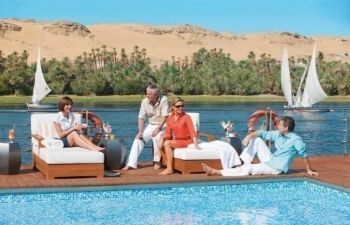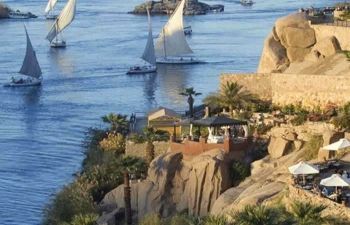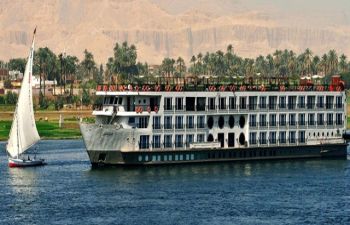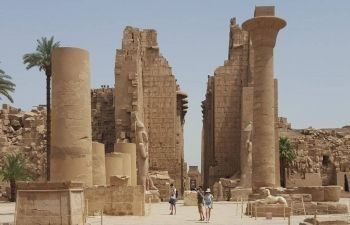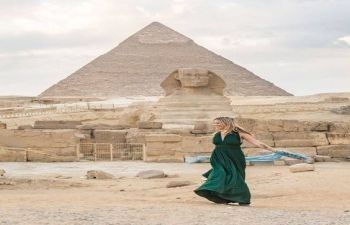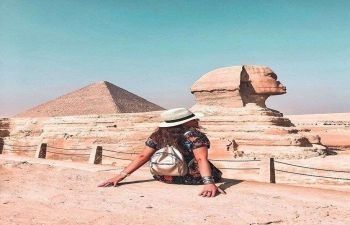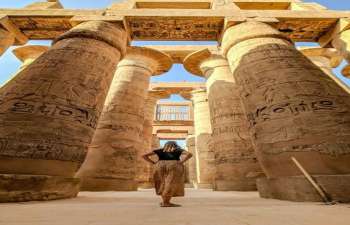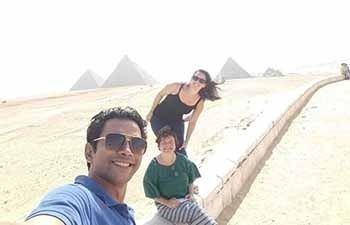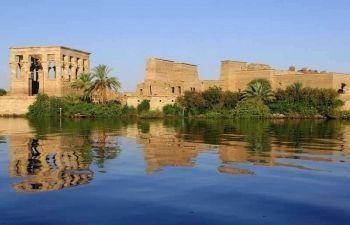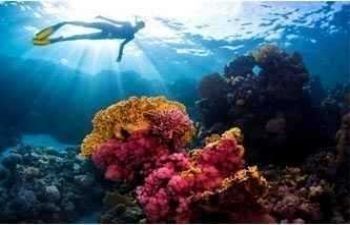8 days Nile cruise Package from El Gouna
Enjoy 8 days Nile Cruise Package from El Gouna, Explore the famous sites between Luxor and Aswan including Karnak Temple and Luxor Temple and the West Bank Valley of the Kings and Valley of the Queens and Colossi Of Memnon and Aswan and Abu Simbel.

Have amazing Nile Cruise Tours from El Gouna on the River Nile between Luxor and Aswan. you will discover the many archaeological treasures, Take the chance to enjoy a wonderful experience accompanied by an expert tour guide for 7 Nights/8 days Nile Cruise from El Gouna to discover ancient Egyptian civilization along the Nile valley where you will visit Luxor temple, Karnak ![]() , Valley of the Kings, Queen Hatshepsut temple, then sailing to Edfu temple & Kom Ombo temple . Finally visit Aswan High Dam, the Unfinished Obelisk, and Philae temple, then we drive you back to El Gouna .
, Valley of the Kings, Queen Hatshepsut temple, then sailing to Edfu temple & Kom Ombo temple . Finally visit Aswan High Dam, the Unfinished Obelisk, and Philae temple, then we drive you back to El Gouna .
A Marsa Alam Tours Representative will meet and assist you at your hotel in El Gouna for your transfer to Luxor (about 4 hours driving in the eastern desert). Arrive in Luxor and then met and accompanied by your expert Egyptologist
Embarkation& Lunch on board of the Nile Cruise, proceed with the Visits to the Eastbank of the Nile Including
Karnak ![]() temple:
temple:
Karnak ![]() s more than A temple, is a spectacular Complex of Sanctuaries, Kiosks, Pylons, and Obelisks, All dedicated to the Theban gods and to the Greater Glory of Egypt`s Pharaohs, Karnak
s more than A temple, is a spectacular Complex of Sanctuaries, Kiosks, Pylons, and Obelisks, All dedicated to the Theban gods and to the Greater Glory of Egypt`s Pharaohs, Karnak ![]() was the Most Important place for the worship of the Theban Triad(Amun, Mut, and Khonso)
Luxor Temple
was the Most Important place for the worship of the Theban Triad(Amun, Mut, and Khonso)
Luxor Temple
Largely built by the New Kingdom Pharaoh Amenhotep the Third and Completed by King Tutankhamon and the Great King Ramses the second, The First pylon was raised by Ramses the second and Decorated with His Military Battle of Kadesh
Dinner &Overnight on board the Cruise in Luxor
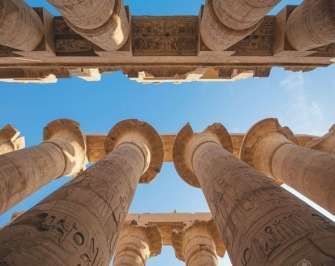
Breakfast on the board on the Nile cruise, Today you will visit:
The valley of the Kings
Once called the great Place of the Truth, this valley Called now the valley of the Kings, It is a Majestic domain of the Pharaohs who once lay in great stone Sarcophagi, awaiting immortality, The isolated valley behind Deir el Bahri is dominated by the Pyramid-Shaped Mountain Peak
The colossi of Memnon:
Massive pair statues Know as the Colossi of Memnon, Rising about 18 M from the plain, They are the remains of what once the largest complex on the west bank, Built by Amenhotep the Third
The Queen Hatshepsut temple
Rising out of the desert Plain, in a series of terraces, The temple of Hatshepsut Mergs with sheer limestone Cliffs of the eastern face of the Theban Mountain as if Nature herself had built this Extraordinary monument.
13:00 sail to Esna lock& lunch will be during the sail
18:00 arrive, Esna Lock, Sail to Edfu& Dinner
Overnight o board of the Cruise in Edfu
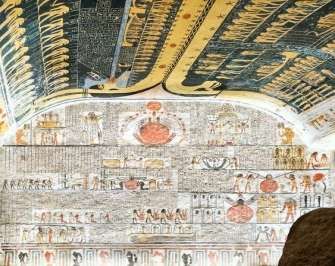
Breakfast on board the Cruise
07:00 Visit the temple of Edfu
Edfu temple
Upper Egyptian site dominated by a large well -Preserved temple, dedicated to the hawk-God Horus, The Construction of Ptolemaic temple of Horus, which was founded on the site of a much earlier temple, dated to the period between the reigns of Ptolemy the Third(246 B.c), The descriptions on the walls include the Myth of contending of Horus and Seth(Probably performed annually as a religious Drama.
09:30 Sail to Kom combo
12:30 lunch on board of the Nile cruise during the sail
15:30 arrive Kom Ombo, visit the temple of Kom Ombo
Kom Ombo temple
The temple and the associated settlement site located 40 K.m north of Aswan, the temple was dedicated to the deities Sobek and Horus and date mainly to the Ptolemaic and Roman period(332 B.b -395 A.c)
17:30 Continue sailing to Aswan, Dinner will be during the sail
21:00 arrive Aswan and overnight on board the Cruise
Meals: Breakfast, Lunch, Dinner
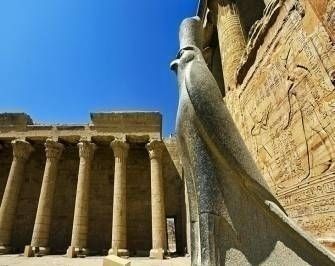
Breakfast on board the cruise.
Optional Tour to Visit Abu Simbel
Abu Simbel temples
The two temples of Ramses the second and the Queen Nefertari were carved out of the Mountain on the west bank of the Nile between 1274 and 1244 B.c, The Great Temple was dedicated to Ramses the second, Ra-Harakhty, Amun Ra, and Ptah, with 4 Colossal statues, The second temple was dedicated to The Queen Nefertari and Goddess Hathor, the two temples were dismantled stone by stone and rebuilt on higher ground, The preservation of the two temples of Abu Simbel must Rank as the greatest Achievement of the Unesco.
Enjoy a sailing trip with a felucca around the Elephantine island , You can book an optional tour to the Nubian village ( It will cost 40 $ per person)
Meals: Breakfast, Lunch, Dinner.
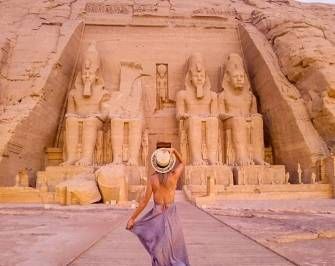
Breakfast on Board the Cruise
08:00 Proceed with Visits of Aswan including the Temple of Philae and tour by Felucca around Elephantine, the High Dam, the Unfinished Obelisk
Phiala temple
Built to honor the goddess Isis, this was the last temple built in the classical Egyptian style. Construction began around 690 BC, and it was one of the last outposts where the goddess was worshipped
The High Dam
Aswan High Dam is a rock-fill dam located at the northern border between Egypt and Sudan. The dam is fed by the River Nile and the reservoir forms Lake Nasser. Construction for the project began in 1960 and was completed in 1968. It was officially inaugurated in 1971.
The Unfinished Obelisk
Aswan was the source of ancient Egypt’s finest granite, used to make statues and embellish temples, pyramids, and obelisks. The large unfinished obelisk in the Northern Quarries has provided valuable insight into how these monuments were created, although the full construction process is still not entirely clear. Three sides of the shaft, nearly 42m long, were completed except for the inscriptions. At 1168 tonnes, the completed obelisk would have been the single heaviest piece of stone the Egyptians ever fashioned.
Meals: Breakfast, Lunch, Dinner.

Breakfast on the board on the Nile cruise
Free day Sailing. You can choose to do Edfu on day 3 or on Day 6
Edfu temple :
Upper Egyptian site dominated by a large well -Preserved temple, dedicated to the hawk-God Horus, The Construction of Ptolemaic temple of Horus, which was founded on the site of a much earlier temple, dated to the period between the reigns of Ptolemy the Third(246 B.c), The descriptions on the walls include the Myth of contending of Horus and Seth(Probably performed annually as a religious Drama.
Sail to Luxor through Esna lock
Free time in Luxor
You can book optional tours to Luxor Museum or the mummification museum for 40 $ per person
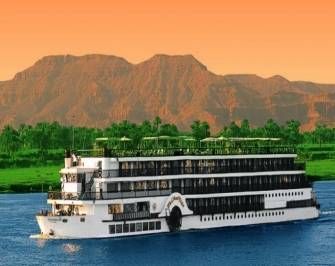
Free day in Luxor , You can book an optional tour to( Madinet Habu temple, Ramseeum temple, and Valley of the Queens
Madinat Habu temple :
In ancient times Madinat Habu was known as Djanet and according to ancient belief was the place was Amun first appeared. Both Hatshepsut and Tuthmosis III built a temple dedicated to Amun here and Later Rameses III constructed his larger memorial temple on the site.
First Pylon – the temple of Rameses III During his time Djanet became the administrative center of Western Thebes. The whole temple complex was surrounded by a massive fortified enclosure wall, with an unusual gateway at the eastern entrance, known as the pavilion gate. This structure, a copy of Syrian migdol fortresses is something you would not expect to see in Egypt. Rameses III, a military man probably saw the virtue in such a structure. It is likely Rameses resided here from time to time because a royal palace was attached at the south of the open forecourt of this temple, while priests’ dwellings and administrative buildings lay on either side of the temple. Originally a canal with a harbor outside the entrance connected the temple to the Nile. But this was obliterated by the desert long ago.
Madinat Habu temple from the air
Ramsseum:
Ramesseum, funerary temple of Ramses II (1279–13 BC), erected on the west bank of the Nile River at Thebes in Upper Egypt. The temple, famous for its 57-foot (17-meter) seated statue of Ramses II (of which only fragments are left), was dedicated to the god Amon and the deceased king. The walls of the Ramesseum, which is only about half preserved, are decorated with reliefs, including scenes depicting the Battle of Kadesh, the Syrian wars, and the Festival of Min
Deir El Madina
The main cemetery of the royal workmen at Deir el-Medina is situated to the west of the village, on the slope of the Theban hills. Most of the tombs were built during the 19th dynasty. Some of them are impressive in their decoration and size. By the time of the 20th dynasty, the tombs had been turned into family tombs in which the descendants of the original owners were buried. Little alterations were made apart from the addition of another subterranean burial chamber. The lower courses of the eastern hill of Qurnet Murai were the site of burials of babies and children. More than a hundred children were buried in common domestic pottery jars or amphorae, in baskets, even fish baskets, in chests, boxes or in proper coffins there. The poorest burials were those of still-born babies. They contained no jewelry or amulets, only small vessels filled with food for the afterlife. The adults' graves were situated higher up. Many of these graves date from the 18th dynasty
Lunch During the tour.
The valley of The Queens
The Valley of the Queens, also known as Biban el-Harim, Biban el-Sultanate, and Wadi el-Melikat, is a place in Egypt where wives of Pharaohs were buried in ancient times. In ancient times, it was known as Ta-Set-Neferu, meaning - 'the place of the Children of the Pharaoh', because along with the Queens of the 18th, 19th and 20th dynasties (1550-1070 BCE) many princes and princesses were also buried with various members of the nobility. The tombs of these individuals were maintained by mortuary priests who performed daily rituals and provided offerings and prayers for the deceased nobility.
The valley is located near the better known Valley of the Kings on the west bank of the Nile across from Thebes (modern Luxor ) . This barren area in the western hills was chosen due to its relative isolation and proximity to the capital.
The kings of the 18th dynasty, instead of the traditional building of pyramids as burial chambers (perhaps because of their vulnerability to tomb robbers), now chose to be buried in rock-cut tombs.
This necropolis is said to hold more than seventy tombs, many of which are stylish and lavishly decorated. An example of this is the resting place carved out of the rock for Queen Nefertari (1290-1224 BCE) of the 19th Dynasty. The polychrome reliefs in her tomb are still intact.
The ancient Egyptians gave it the name Set Neferu, meaning "seat of beauty". From 1903-1906 an Italian expedition discovered about eighty tombs, some of which belonged to children of royalty. Many were severely damaged having been burned and or reduced to being used as stables for donkeys and camels. One of the most well-known tombs is that of Nefertari, the best-loved of Ramesses II's numerous wives. In her honor, he built a beautiful temple at Abu Simbel.
In the Evening you can Enjoy An Optional Tour Sound and Light Show at Karnak ![]() :
The show starts with a historical introduction covering the birth of the great city of Thebes and the erection of the Karnak
:
The show starts with a historical introduction covering the birth of the great city of Thebes and the erection of the Karnak ![]() Temple.
Temple.
The show narrates the glorious achievements of some great Pharaohs as you listen to a magnificent and poetic description of the artistic treasures and great legacy which the Karnak ![]() karnak temple encloses. Overnight at 5 Hotel.
karnak temple encloses. Overnight at 5 Hotel.
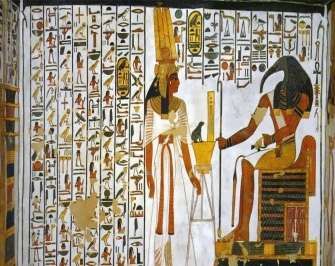
Breakfast on the Nile cruise then you will be accompanied by your private tour guide and a private air-conditioned vehicle to visit:
Luxor Museum
This wonderful museum has a well-chosen and brilliantly displayed and explained collection of antiquities dating from the end of the Old Kingdom right through to the Mamluk period, mostly gathered from the Theban temples and necropolis. The ticket price puts off many, but don't let that stop you: this is one of the most rewarding sights in Luxor and one of the best museums in Egypt.
Drive to Dendera temple
Dendera temple
The Temple of Hathor was largely constructed during the Late Ptolemaic period, specifically during the reign of Ptolemy XII and Cleopatra VII. Later additions were made during the Roman period. Although built by a dynasty of rulers who were not native Egyptians themselves, the design of this temple has been found to be in accordance to that of other classical Egyptian temples, with the exception of the front of the hypostyle hall, which, according to an inscription above the entrance, was constructed by Emperor Tiberius.
Apart from these, there are also scenes in the temple complex portraying the Ptolemaic rulers. For example, carved onto the external face of one of the temple walls is a huge relief of Cleopatra VII and her son by Julius Caesar and co-ruler, Ptolemy XV (better known as Caesarion). The two Ptolemaic rulers are shown dressed in Egyptian garb, and offering sacrifices.
Hathor was also regarded as a goddess of healing, and this is evident in the presence of a sanatorium in the temple complex. Here, pilgrims would come to be cured by the goddess. Sacred water (which was made holy by having it poured onto statues inscribed with sacred texts) was used for bathing, unguents were dispensed by the priests of Hathor, and sleeping quarters were provided for those hoping that the goddess would appear in their dreams, and so aid them.
Lunch will be served in Qena then we drive you back to your hotel in El Gouna .
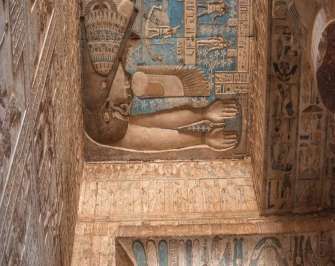
Inclusions:
- Meet and assist service upon arrival & departure
- Assistance of our personnel during your stay and excursions
- Transfer El Gouna to Aswan and Luxor to El Gouna
- All transfers by modern air-conditioned deluxe vehicle
- Accommodation for 7 nights on Super deluxe 5-star cruise on full board
- All Nile Cruise excursions as mentioned in the itinerary
- Entrance fees to all sights between Luxor and Aswan
- English speaking Egyptologist guide during your excursions
Exclusions:
- Any extras
- Drinks in the restaurant
- Abu Simble optional trip( 90 $ per person)
Please remember to bring:
- Passports
- Camera
Reviews
